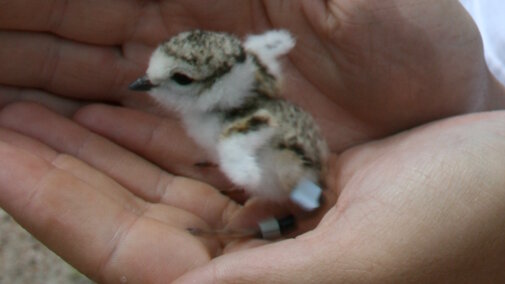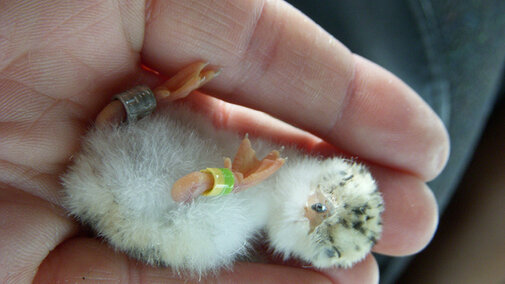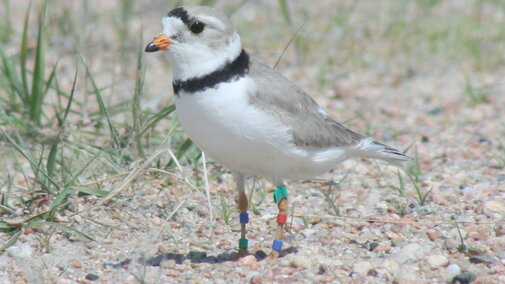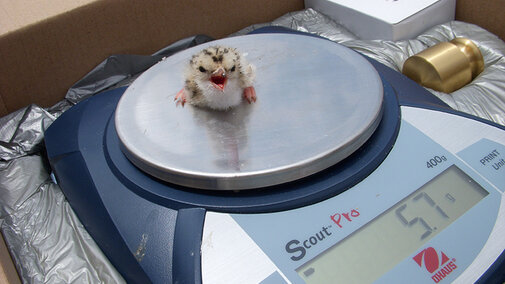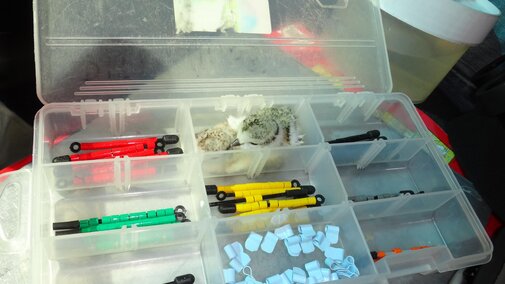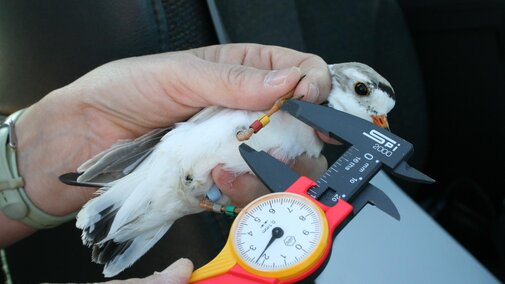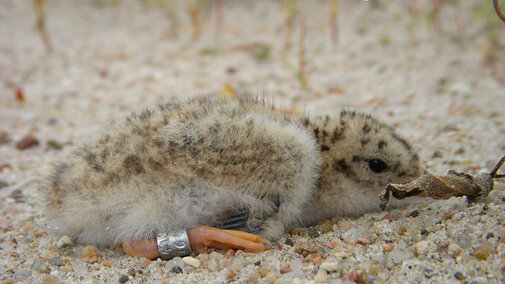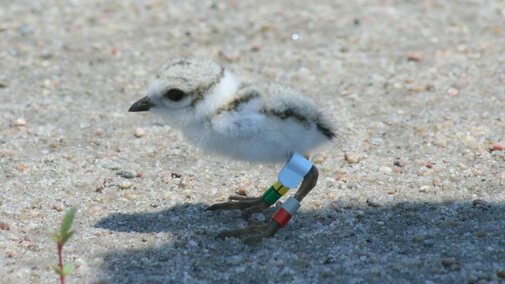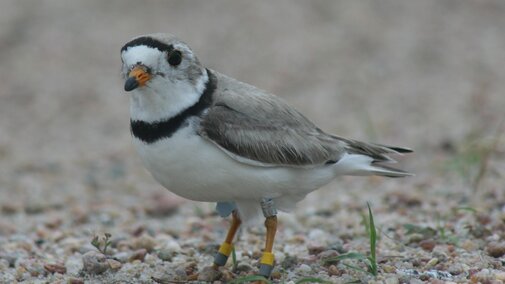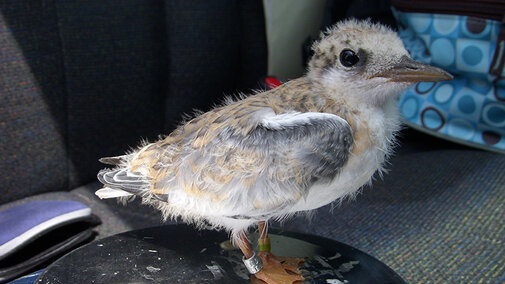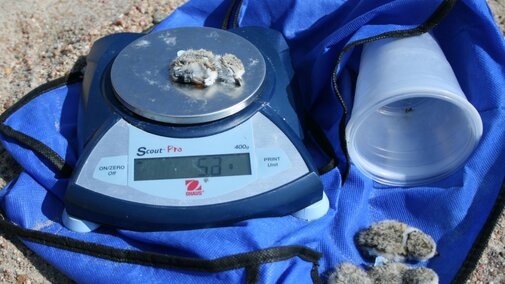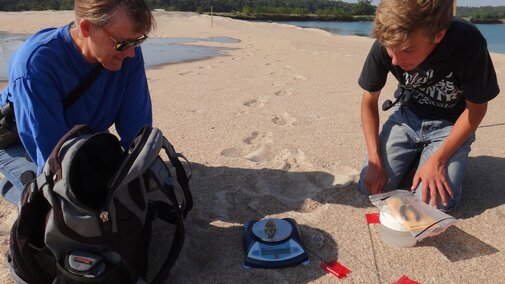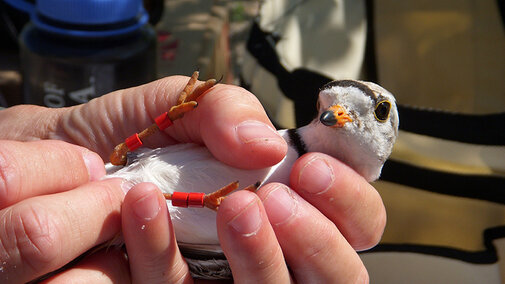We have banded terns and plovers nesting along the lower Platte River study area since 2008. We place leg bands on Piping Plover adults and chicks and Least Tern chicks. We do not band Least Tern adults.
Each plover receives an individually numbered metal USGS band on one of their upper legs, a light blue flag on the opposite upper leg, and a unique combination of 4 color bands on their lower legs. The light blue flag is a regional marker indicating that this plover was banded along the Platte River system in Nebraska. Plovers banded in other breeding regions receive different colored flags.
Each tern receives an individually numbered metal USGS band on their lower right leg. Terns have such small legs that we are not able to color band them like we do with the plovers, but in some years we have placed a yellow-green split band on the lower left leg.
We catch plover adults using a simple box trap placed over the nest. The adults simply go in the door, sit on the eggs and then can find their way back out the door. The entire trapping and banding processes takes no longer than 5 minutes. We do not use any sort of trap to catch tern and plover chicks; we simply pick them up out of the nest cup or off the sand.
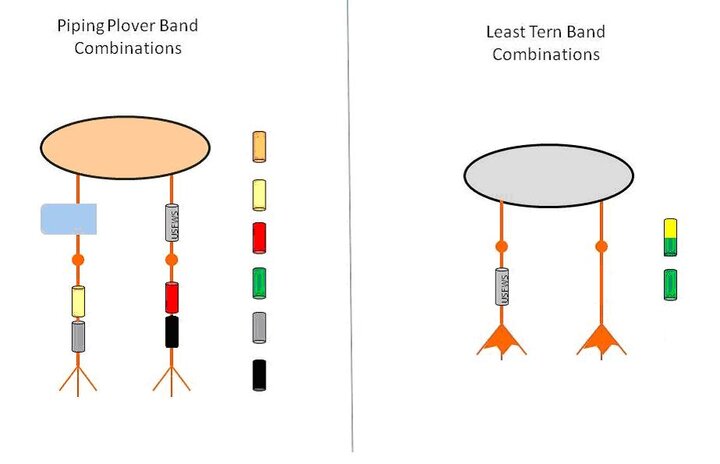
Banding Data
Every time a bird is banded we record the following information:
- Date, time, location
- Metal band #
- Color band combination (upper left leg, lower left leg, upper right leg, lower right leg)
- Mass (grams)
- We also record wings, legs, head and bill.
Birds Banded
- 260 Piping Plovers
- 73 plover adults
- 187 plover chicks
- 532 Least Tern chicks
Piping Plover Re-sightings
- 33% of the Piping Plovers banded along the lower Platte River study area have been re-sighted at least a year after originally banded.
- 61% of the Piping Plovers originally banded as adults have returned to the lower Platte River study area to nest in a following year.
- 21% of the Piping Plovers originally banded as chicks have returned to the lower Platte River study area to nest in a following year.
- 10 of the plovers originally banded along the Lower Platte River study area have been observed nesting in a different study area (6 nested along the Missouri River, 2 nested along the Niobrara River, and 2 nested along the central Platte River).
- We have observed 45 color banded Piping Plovers that were originally banded by other research groups in different study areas.
